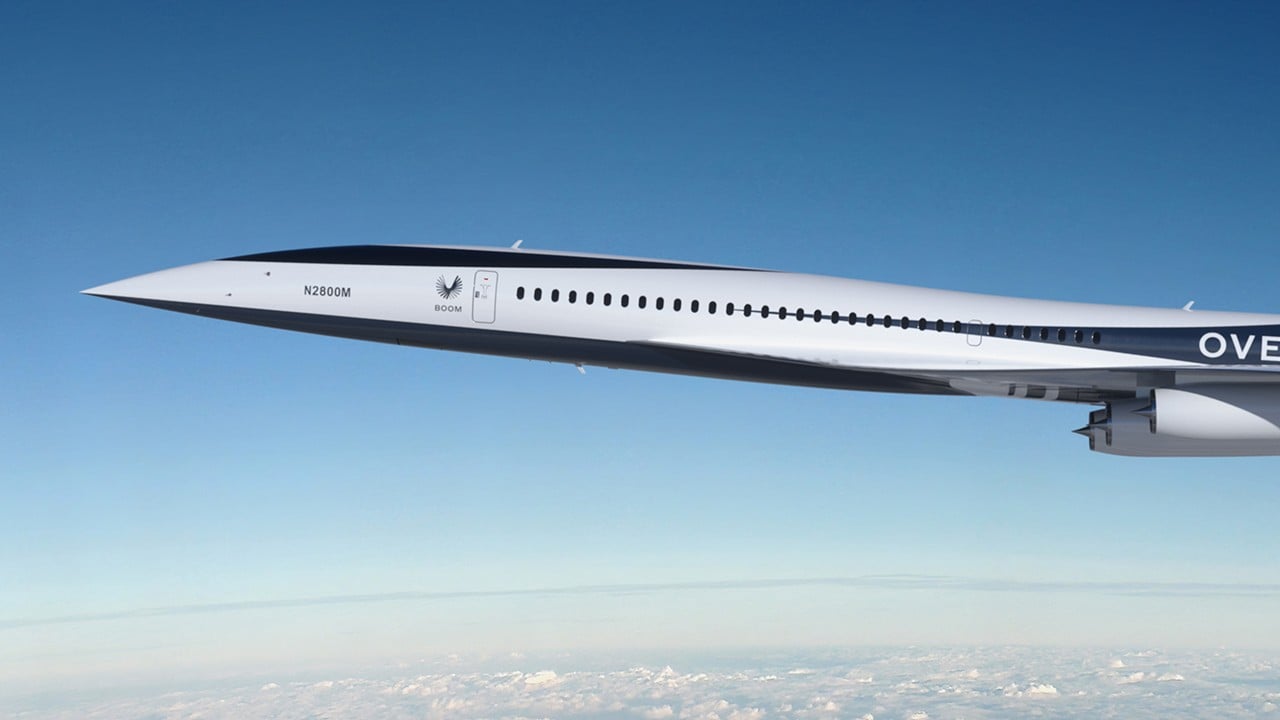
‘Revolutionary’ design: Chinese scientists invent the most powerful detonation engine for hypersonic flight
- Hypersonic weapons researchers say they have an unprecedented power solution for aerospace planes
- Paper says design integrating rotational and straight-line detonation across a wide speed range is ‘world first’ and testament to Chinese ingenuity
The “revolutionary” air-breathing engine could, in theory, lift an aircraft from a runway to more than 30km (18.6 miles) into the stratosphere and continuously accelerate it to 16 times the speed of sound.
At this velocity, even the longest intercontinental flights could take just one or two hours while consuming less fuel compared with conventional jet engines.
The engine blueprint was detailed in a peer-reviewed paper published in the Chinese Journal of Propulsion Technology in December by a team led by Zhang Yining with the Beijing Power Machinery Institute.
According to the paper, the engine operates in two distinct modes: below Mach 7 speed, it functions as a continuous rotating detonation engine.
Air from the outside mixes with fuel and is ignited, creating a shock wave that propagates in an annular, or ring-shaped, chamber. The shock wave ignites more fuel during rotation, providing a powerful and continuous thrust for the aircraft.
Above Mach 7, the shock wave stops rotating and focuses on a circular platform at the engine’s rear, maintaining thrust through a nearly straight-line oblique detonation format, according to the paper.
The fuel auto-detonates as it reaches the rear platform because of the very high speed of incoming air. Throughout its operation, the engine relies on detonation as its primary driving force.
Zhang and his colleagues did not disclose the efficiency of the engine in their paper. However, based on previous scientific estimates, the explosion of combustible gases can convert nearly 80 per cent of chemical energy into kinetic energy. Conventional turbofan engines, which rely on slow and gentle combustion, achieve 20-30 per cent efficiencies.
China makes leap ahead with hypersonic technology
Zhang’s team said the design integrating rotational and straight-line detonation across a wide speed range was a “world first” and testament to Chinese ingenuity.
“This solution has obvious advantages and is expected to improve the optimal thermodynamic cycle efficiency in nearly all speed ranges, bringing a revolutionary change in aerospace propulsion,” the researchers said.
Publicly available information indicates that the Beijing Power Machinery Institute is China’s largest manufacturer of ramjet engines, supplying propulsion systems for the country’s most advanced weapons, including hypersonic missiles.
The PLA’s 93160 unit, headquartered in Beijing and deeply involved in designing the new detonation engine, remains shrouded in secrecy with no publicly available information.
The current propulsion systems for China’s hypersonic vehicles consist mainly of rockets and scramjet engines. Rockets are less efficient due to the need to carry oxygen, while scramjet engines require the vehicle to reach speeds above Mach 4 to activate and experience a sharp drop in thrust near Mach 10.
Both military and civil supersonic aircraft projects are in dire need of new breakthroughs in propulsion technology to achieve greater payload and range at lower costs.
Zhang’s team said the new detonation engine transition was a challenge between the two operating modes: as the speed approached Mach 7, the rotating detonation mode became unsustainable, and the oblique detonation mode had to be ignited within a short time.
The authors said possible solutions to the problem include reducing the incoming air speed from Mach 7 to Mach 4 or lower to allow the fuel to heat sufficiently for auto-ignition.
Slight adjustments to the engine’s internal structure, such as the diameter of the circular platform and the angle of the shock wave tilt, could affect engine performance.
Overall, the engine was not too demanding on operating conditions and could work efficiently in most typical scenarios, they said.
However, the researchers said that relying solely on the paper was not sufficient to produce a practically usable product because they had omitted critical parameters for engineering applications, such as the limited space available for air flow path.
China names submariner Hu Zhongming as top PLA Navy commander
The world’s first sustainable detonation engine was developed by Soviet scientists during the Cold War but remained confined to laboratories because of challenges reliably controlling the shock wave.



